|
|
| home |
| Interview with Neil Denari by Ben Flatman |
| This interview to Neil M. Denari, director of
SCI-Arc (Southern California Institute of Architecture) in Los Angeles, was conducted by Ben Flatman, architecture student at the Bartlett School in London, just prior to SCI-Arc's recent move from Playa Vista to Downtown Los Angeles. SCI-Arc is an independent school of architecture founded in 1972 by architect Ray Kappe together with a small group of teachers and students who were seeking a radical alternative to the conventional system of architectural education. Established as a place for invention, exploration, and criticism, the school quickly developed an international reputation for experimentation in architecture and grew from a spontaneous collective of 44 students to a more established institution of about 500. Neil Denari was appointed as the third director of the school (Ray Kappe and Michael Rotondi being his predecessors) in June 1997, after a year long search that spanned the globe resulting in the review of 60 candidates. Neil Denari, 39 at the time, was chosen to lead the school over an older generation of more established architects, thus reasserting SCI-Arc's tradition of youth (Thom Mayne of Morphosis and Eric Owen Moss, as twenty-something avant-guarde architects, both taught at the school when it first opened) and its flexible and experimental approach. |
[06jan2002] | |||||
|
|
In an interview with Nicolai Ourousoff, Los Angeles Times architecture critic, dated August 17, 1997, freshly-appointed Denari already sets forth some very clear ideas about the role he expects SCI-Arc to play in the cultural landscape of Los Angeles. The decision to move the school's premises from a rented industrial building in Marina del Rey to a permanent home in the heart of Los Angeles is a very important accomplishment after few years of directorship and an extremely significant action at an urban level, a model for the future development of downtown. At the annual AIA/LA awards ceremony on October 25, 2001 SCI-Arc was honored for "the strength of your courage and depth of your conviction in 'walking the talk' of urban renewal. By relocating this renowned laboratory for architectural exploration into the heart of our great city, you have given new purpose to an extraordinary building, and made a significant contribution to the launching of a new life for downtown Los Angeles." SCI-Arc's new home at the Freight Depot was dedicated on Friday, November 30, 2001. Paola Giaconia paolagiaconia@infinito.it BEN FLATMAN: Both your predecessors as director, Raymond Kappe and Michael Rotondi, wanted SCI-Arc to be part of the city and not just in the city. Does SCI-Arcís move to Downtown LA enable you to lay claim to finally having achieved that objective? |
Paola
Giaconia, Architetto (Ordine Milano), studied architecture at the Politecnico di Milano in Italy. Recipient of a Fulbright Scholarship, she graduated from the Master's Degree Program at SCI-Arc (Southern California Institute of Architecture) in 1999. After working with such architectural offices as Morphosis (Thom Mayne) and RoTo (Michael Rotondi) in Los Angeles, she founded A.polis with partner Gregory Taousson. |
||||
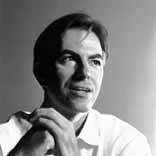
|
NEIL DENARI: Well, the short answer is yes. When Ray started the school he wanted it to be a school that was connected to the community. But that had an open definition. He never really saw the school as an enclosed, collapsed, self-referential kind of place, that would be removed from practice- in fact as you know, all the faculty practice. And so I think that there are these two different SCI-Arcs. One that has always been connected to the community and one that is this a sort of quasi-art school; as long as Iíve been here Iíve wanted to see those distinctions removed, or at least see that they donít compete with each other. Now that we are in Downtown, it's really going to galvanise the whole mission because weíre here and weíre now much more connected to city politics and the forces that shape cities and projects. Weíre really going to be defining ourselves as one of those forces and not just feeding off of them. How did you come to be director of SCI-Arc and did you always see yourself pursuing a path in academia parallel to your professional career? The way I began teaching was not very conventional. When I finished school I worked for a mid-sized office in New York and the owner of the firm was the dean at Columbia. I had no aspirations to teach- none. I was always very much committed to just being an architect and then following my path towards developing my own ideas in my own office. However, I was invited up to some reviews at Columbia when I was quite young, just 28, and then they offered me a studio. This was after having worked at the office for three years, so I sort of said Ďokay, Iíd like to give it a tryí. I think they were really inviting me because of what I was doing with my own work at the time and certain critical and intellectual things that I was trying to discover, and may be they thought that I had a critical enough mind and a good enough eye to put those things together and become a teacher. So, I began teaching there and I had wanted to come out to California for quite some time and made the move and started teaching at SCI-Arc and enjoyed it. I taught about half-time, or three-quarters time and by the time Rotondiís ten years were up, I think people looked around the school to see who amongst us here at the school would be capable of doing this. The goal wasnít to find someone from within the school; it was to find the best person. And so by looking in and outside of the school simultaneously, they had about 60 people in the end. 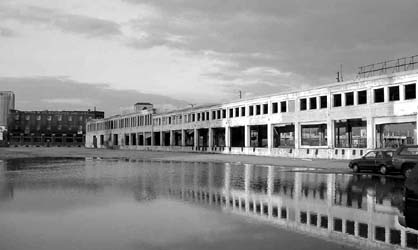 So, even though you never had any inclination to become a teacher, youíve ended up as head of a school. Do you think thatís ironic? No I donít, because I could still basically say that everyone here is not an academic. We want to work, we want to build. The school is put together that way. When Ray started the school, he didnít do it as a dean or as an academic. He said education is very important Ė we need to have practice and theory come together. So I donít see any bad fit. Itís my perception that a lot of contemporary architecture is more interested in reflecting existing social and cultural conditions rather than affecting them. May be this is a reaction against the perceived arrogance of the profession in the past and architectsí assumption of a god-like position. I was wondering how far you see this as a reflection of our powerlessness as architects to actually change things and how much of a role you see for architects in shaping society, or even improving it? Well, I think the whole idea of holding a mirror up to the world, which is a simple kind of act, can work for some architects as being a kind of honest approach. For others it is a way of getting around taking a real critical standpoint. Thatís the argument of rap and 'gangster' lyrics- they all say, Ďlook, Iím just telling you whatís happening in the neighbourhood.í Chuck D of Public Enemy was saying that Rap is like CNN- ĎI want to deliver to you, all you people who donít knowí. So thatís at one level the kind of service that needs to happen in this journalistic way of making something. But then youíre forced, when youíre thinking about doing something critical, to actually have to decide, to possibly pass judgement, to risk alienation of various people. And thatís the compelling moment in being an architect and I think thatís what we want to try and do here. We donít want to intentionally oppose, nor do we want to be complicit and simply hold up a mirror and say Ďthe world is much bigger than I amí. I think our position as architects is changing. Part of us being here in Downtown and getting connected to city politics is so that architecture is not the last thing on a list of fifty things that happen when you want to build a building or change a road or develop new policy. The last thing is always Ďletís call in the architectí, okay? And weíre getting a lot more connection to the positive instrumental force that architects can bring if only we can work in a collaborative kind of way and not in a heavy-handed artistic way. 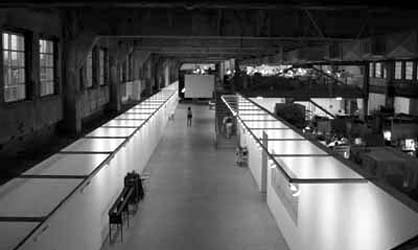 Do you think that there has been a fundamental change in the way architects see their role? It seems to be implicit in the MR+D programme and the approach they are taking there with the scenario planning, which assumes the architect can no longer simply dictate how things are going to be and follow a linear path from inception through to implementation of a project. It puts the architect in a completely different position. It means that the architect is obviously collaborating but it doesnít necessarily mean that the architect should automatically be less important. And I think thatís one of the fallacies in the idea that there is no more author, there is no more superstar. Architecture and the role of architecture is and always will be dramatically important. Itís just the issue of where credit is assigned will be changed quite a bit. So if the architect is conspiring with the engineer and the engineer is connecting to urbanists and so forth, everybody is instrumental and powerful in their own particular way but the web of relations is so much more complex rather than linear. When the architect is talking to the mayor there is a different web of relationships that create a greater connection to the possibility of progress.  Iíve been taking a look at your book, ďGyroscopic HorizonsĒ and you talk about globalisation and a new impermanent world, of technology and a hegemonic media culture. In places, you seem to take a critical stand on aspects of this new world, but overall you seem to embrace it as the new reality. Do you feel that the reality you refer to, of airport lounges and multiple gateways adequately covers all aspects of this new age? I was just wondering whose reality you perceive that as being? I was wondering whether you were consciously writing for a specific elite- may be for directors of architecture schools that lead that lifestyle? Yes, the book was written for an architecture audience, it was not a lay book at all. The idea of the book is that by the time you read and absorb the text and images, it will put you in a particular sort of mood- very filmic and sort of cinematic. This mode of impermanence may be one of the bigger moods that comes out of it. I didnít go consciously into an analysis of third world versus first world and the nature of distinction and difference in growing separations about issues of identity, although I touch on that. But the issue of where we are- where your body is at, where your identity is at, where your home is at, or how you move from point A to point B. Itís simply about the necessity of being able to locate oneself. A map does that, a building does that, and a dining room table does that. You can look at the myriad ways that a person tries to deal with passage, and movement and stasis and then you pack politics and money, and zealousness and everything else that goes into it. That was what part of the preamble to the book was about, and itís a pretty sprawling book. It takes a lot of divergent pathways. Itís just a piling up of a lot of thoughts and possibilities, just like any first project it can stand up to some inspection and then for me it sort of says Ďboy, that didnít go anywhereí. Richard Meier has said of LAís avant-guard architecture, ďWhere is it?Ē I was wondering whether you could give an example of an important or what you would regard as useful piece of urbanism to have come out of LA in the last twenty years? WellÖ Citywalk, the Universal project, designed by Jon Jerde, the mall architect. You donít have to pay to get into it, although you have to pay for parking. Itís basically an outdoor shopping centre, based on a central piazza with streets running off it. And there are a series of franchised stores. Itís like a kind of re-animated Los Angeles that never was. Citywalk has become a model for commercial mixed-use development. Developers in France are looking at it; developers in Asia have looked at it. Theyíve either hired Jerde or theyíve started copying it. In the Nineties there were a string of seminal texts, like those by Mike Davis, on the issue of privatisation and the difficulty of the city being incredibly open but not being understood as being public. This was because there was an increasing sense that beyond the street itself it was all just privatised. And so Citywalk privatised a concept of the city. It creates a gap between real LA and simulated LA. It certainly didnít invent a prototype but it put a spin on it. So, Iím talking to you about it because it was a point of reference. And what falls out of it is, itís happening in other places. It also came out of the riots; right after the riots it was developed because tourism, especially Japanese tourism, fell off and this was a way to allow that to happen again. Other than that I canít think of anything- itís a reference. I must say Iíve been disappointed by what Iíve seen. I visited Eric Own Mossís buildings in Culver City the other day and it seemed to me his buildings did what every commercial development in LA does, which is focus on a parking lot and have little or no relationship to the streets around them. I think the key issue here is: can LA tolerate a normative view of what urbanism is? And if it canít, then may be something succeeded there. If you take the Samitaur building, the long green one built above the existing buildings, thatís an interesting piece of urbanism because that carried out what was foreseen in the Sixties, with buildings above buildings adding a second layer to the city. And imagine that as an Archigram drawing with balloons and people in the foreground; youíd talk about it being a new city, a new contemporary level of urbanism that doesnít reference the Parisian Street. In fact itís not about the street, itís about densifying the city, which is packing it with more mass and more capabilities for people to work and possibly live. May be those are ways which havenít come into a set of standards yet, in terms of what constitutes urbanism. Eric Own Moss would talk about it in terms of densifying the city, adding to the city, preserving the existing buildings. But the social and spacial and collective content, no. LA finds it very difficult to be understood and organised in that particular way. Except may be for the Hispanic community, who seem to have revived a street culture on Broadway? Well, Broadway is inhabited like a New York street. Itís the only one and there it is. So, I think that we are looking for ways that urbanism can be re-thought, re-understood in a city like LA and itís really so amazing now that weíre already here. Weíre in the place where we think we need to work on ideas, at least for North America. But you know as well as I do that at the periphery of many cities all over the world, as J.G. Ballard put it, ďthe Californianisation of the Globe is happening.Ē  Can you talk me through the move that SCI-Arc is making and the arrangements with the private developer? Whatís the history of the move? In 1991, after twenty years, SCI-Arc moved from its original location to the school on Beethoven Street on the Westside. Even at that time there was speculation and investigation into moving Downtown. For two reasons: one, itís always been cheaper and number two, the immediate connection to a higher level of urban density, if only in terms of building mass. So the school has wanted to find a permanent home for quite some time and didnít just want to exist simply as a tenant paying rent to some landlord somewhere. When I took over in í97 it was one of the mandates for me to figure out a way to move the school to an appropriate place and own the building. And I think, all considered, especially over the last eight or nine months Iíve probably spent at least half of my time in my position working on that issue. So it reinforces the fact that I as director donít have a strictly academic role, even though I want to lead the school in terms of what I think ought to be worked on architecturally. But thatís just the nature of the school. Itís independent, itís mobile. I wanted to put it together more as a solid business and weíre now concluding the project. Can you tell me what the situation is concerning ownership of the land and the site? Yes, itís much clearer now than what it was. Weíre buying the site from a developer, who bought it initially thinking that he could possibly build industrial buildings, but the artist community rejected it and the city didnít really want it to happen. Weíre buying the building and basically the land the building sits on. Itís 2 and a half acres, directly from the landowner, so SCI-Arc will own straight away the building. Weíve gotten a $1.5 million grant from the city that will go straight into the construction costs or the purchase price. We also hope to get tax credits for renovating an historical building. Although weíre not a profit making company, weíre working out a scenario that will allow us to recover the value of those tax credits. Are there any deals with developers? We have no bargains with any developers because weíre just buying the site. We have the city behind us- theyíre helping us put together the financing and the whole project will be in our hands. Weíre choosing our own general contractor and weíve been the architects. There have been a whole series of things that have fallen into place to allow that to happen. Previously we were in a relationship with a developer, but heís gone. He couldnít pull it together. So weíre in a much better situation now. Whatís your control going to be over the rest of the site? Itís a bit of a question mark right now. Thatís being sold separately and we will be able to articulate our position and the goal of the site is still being a campus. And I think that the city in a way will act as a sort of a big brother for us. Whoever the developer is that comes in, I think that the city will really argue pretty clearly that SCI-Arc needs housing that is affordable and that the site has to have some infrastructure, in order to support the students. We want SCI-Arc faculty to design it because we have a wealth of talent and knowledge and we really do want to make good on the mission of the school to engage in city projects. So, I think that weíll have a lot of leverage. Weíll have a lot of leverage through the culture of the project, if not by having a big bank account. I see what SCI-Arc is doing here as one of the most interesting pieces of urbanism that Iíve come across since coming to LA. I think it is going to be a model. Especially for Downtown development, because we could be doing something that a typical developer just wouldnít think about. 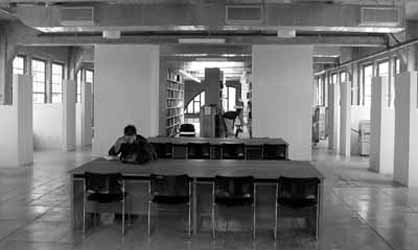 Other academic campuses in LA, such as UCLA and USC, seem to be very isolated from the rest of the city. I think weíll have a coherent site right here but it will also connect to Downtown, connect to Little Tokyo, connect to the artists, connect to the homeless, connect to everybody. I want to understand it as a fragment of a new type of city but also the idea that itís a park, the idea that itís pedestrian. Yes, you have to figure out the parking in all projects and parking is a very difficult thing to deal with because its not Amsterdam- people arenít riding bikes and the public transport is limited. And I think that we need to think about trying to generate more infrastructure here, so that live-work means that you can use technology to your benefit. Letís say, if thereís enough infrastructure within five minutes walk, both at the level of entertainment, the grocery store, shopping, then youíd probably be able to exist within that radius, a greater percentage of your time than you do right now, where everythingís about commuting. How much do you see what youíre trying to do here as new and how far do you see it as using existing urban forms from elsewhere? Itís probably a combination of both. By the time youíve even brought a model here that seems to be workable in some other place, Iím sure it would mutate and it would deform to fit the conditions of Los Angles. There are certain inhibiting phenomena -parking and cars are one of them- that mean you couldnít just take European planning principles and know that thereís an underground nearby. Itís not Berlin, itís not Paris. So I think it will be a combination of new and imported ideas. What will SCI-Arc do next? Is there any danger of SCI-Arc becoming staid, now that itís going to develop this air of permanence? No. The logic of it is that the more you are in control of your resources, the smarter you can be in the way that you use them. You can really unleash all of the energy into education and in a way that may be we couldnít before. This is a kind of one time only thing. I mean one thinks Ďgee, if only SCI-Arc could only move once every ten yearsí then weíd get to recolonise, to remake and do this all the time. But obviously we canít be that nomadic. Itís taken almost thirty years to get to this point where we can own our own building. But I see the site as being pretty evolutionary. I donít think the site is going to fully get built out instantly. I think there are going to be fragments and pieces that are on-going, especially if we can retain our leverage. There are many things that effect us positively that we could never do before. Weíve never had any scholarships because we have no endowment. We donít have any endowed chairs or professorships. And as long as Iím director Iím going to use whatever resources we have- and hopefully they should increase quite significantly- to effect and enforce the mission of the school. It wonít have anything to do with any creeping conservatism or a lack of action. Weíre thinking quite the opposite- that it will really act as a catalyst to things. Iím sure weíll figure out new ways to still be exciting. Ben Flatman benflatman@hotmail.com |
|||||
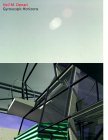
|
Neil M. Denari "Gyroscopic Horizons" Princeton Architectural Press USA, 1999 $28.00 acquista il volume online! |
|||||
|
> SCI-ARC > SCUOLE > FILES |
||||||